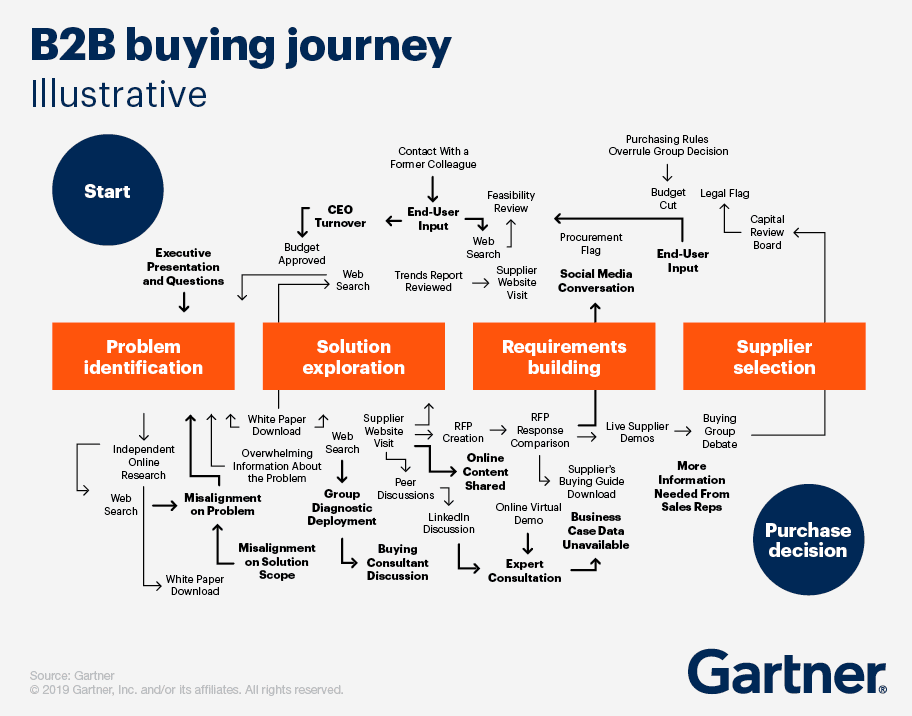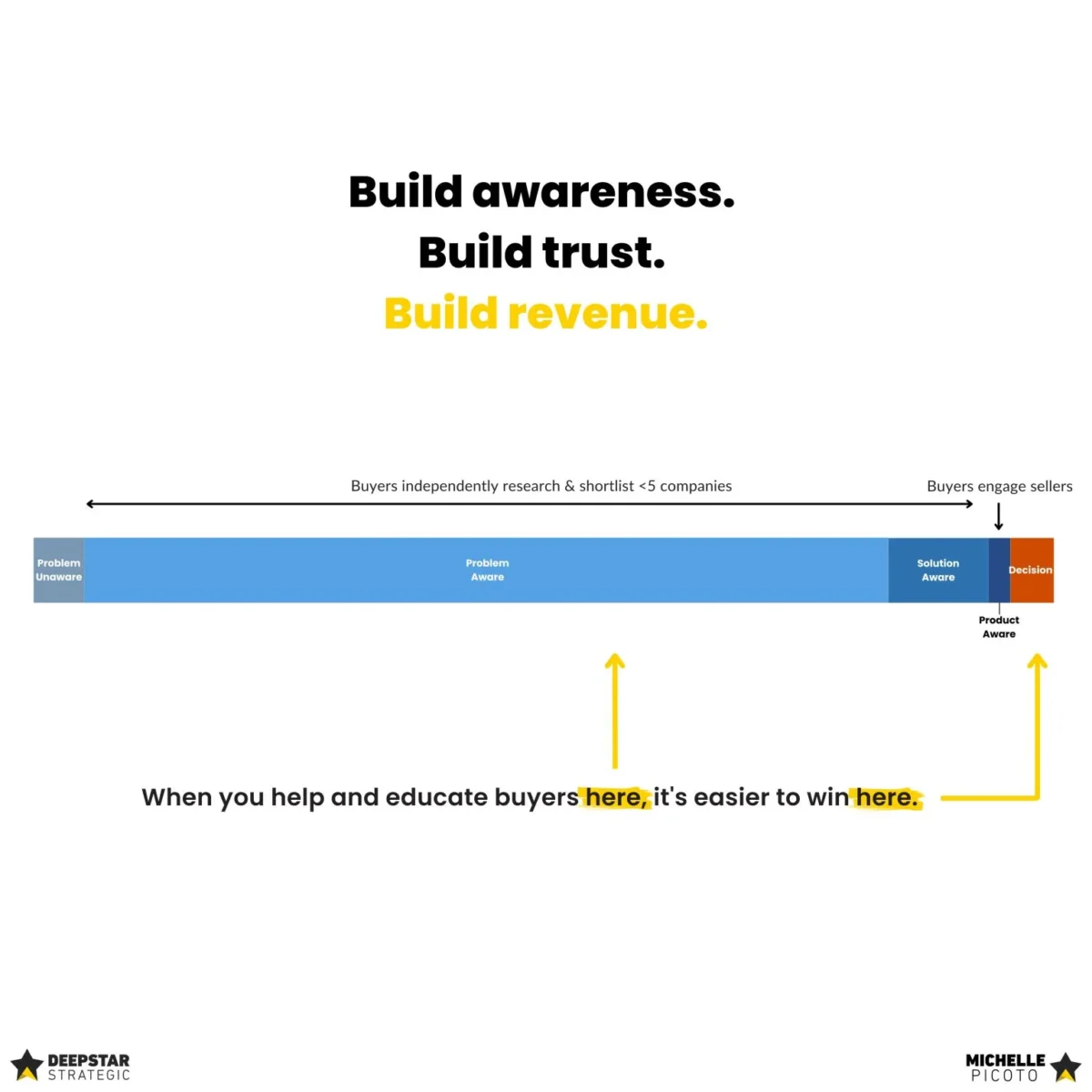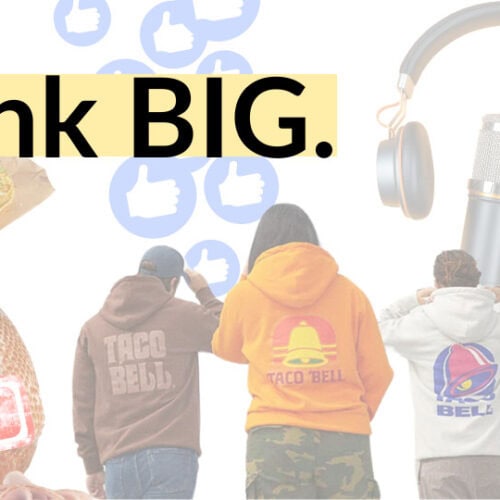Why PR is essential for the modern B2B buyer journey
The modern B2B buyer journey is not a straightforward funnel. It’s a maze of independent research, social validation and digital interactions.
Decision-makers are increasingly avoiding traditional sales methods. Instead, there is a growing reliance on trusted third-party sources and communities.
Let’s examine the shift and uncover not just what’s going out of style but also what actually works in today’s B2B buyer journey.

10 stats about the modern B2B buyer journey:
1) 75% of B2B buyers prefer a rep-free sales experience (Gartner)
2) 80%–90% of B2B buyers have a set of vendors in mind before they do any research and 90% of them will ultimately choose a vendor from the day one list (Bain & Co.)
3) 81% of B2B buyers pick a winning vendor before they ever talk to a sales rep (6sense)
4) 84% of C-level and VP-level buyers use social media for B2B purchase decisions (IDC)
5) 95% of B2B buyers say video plays an important role in deciding to move forward with a purchase (Brightcove)
6) Millennials and Gen Z now make up 64% of B2B buyers and Millennials are involved in more than 70% of purchasing decisions (digitalzone)
7) More than 50% of younger B2B buyers rely on external sources — including social media as well as their value network — to help make buying decisions (Forrester)
8) B2B buyers have 27 interactions with vendors before making the decision to buy (Forrester)
9) The average B2B buyer will interact with 13 pieces of content before engaging with a brand, broken down to 8 pieces created by vendors and 5 from third parties (FocusVision)
10) Only 5% of buyers are “in market” to buy at a given time (B2B Institute)
Top behaviors of next-gen B2B buyers:
Self-Educated and Research-Oriented:
Next-gen buyers, particularly millennials and Gen Z, prefer to conduct their own research and gather information from trusted sources online before engaging with sales representatives. Their buyer journey relies heavily on online reviews, expert opinions and social media to inform their purchasing decisions.
Preference for Sales-Free Interactions:
The modern B2B buyer journey is averse to pushy sales tactics, with decision-makers preferring to engage with brands on their own terms. They value easy access to content that educates and informs rather than overtly selling, answering questions they may have and instilling confidence in the brand’s capabilities.
Value Authenticity and Transparency:
Modern B2B buyers are highly skeptical and value-driven, prioritizing brands that demonstrate authenticity, transparency and genuine ethos.
Seek Recommendations from Trusted Sources:
Next-gen buyers trust recommendations from peers, experts and influencers more than traditional advertising. They value social proof and seek validation from others before making a purchase decision.
Digitally Savvy and Mobile-First:
Today’s B2B decision-makers are digital natives who are comfortable using technology and mobile devices for research, communication and purchasing. They expect brands to provide seamless online experiences across multiple channels.
Heavy Reliance on Social Media:
Next-gen buyers are active on social media, using platforms like LinkedIn, Reddit, Substack YouTube, TikTok and Instagram for both professional and personal purposes. They go to social media first for news, advice and inspiration.
Focus on Innovation and Uniqueness:
B2B buyers are attracted to brands that offer unique and innovative products and services, and they are willing to pay a premium for products that align with their values and stand out from the competition.
The B2B marketing tactics struggling the hardest
Email Marketing:
Inboxes are getting spammier. New AI and CRM tools should make cold email outreach more personalized, thoughtful and well-timed, but instead, we are just getting more junk. Bad behavior is making this less effective, even for the players trying to do this right, causing most B2B buyers to ignore cold emails. Additionally, bulk cold emails are on the way to becoming illegal. This is already illegal in Canada and Europe, where brands are required to secure permission or have an existing business relationship before sending bulk commercial messages.
Traditional Tradeshows:
Conferences are experiencing a resurgence in popularity after a pandemic-driven hiatus, with companies returning to in-person events as people value the opportunity for face-to-face networking and experiencing products firsthand. But, expectations are higher than ever. Basic booths aren’t closing the deal. B2B buyers now expect entertainment and experiences in addition to networking and sharing of thought leadership. ROI from events now requires bigger investments, newsworthy hooks and pre- and post-event digital strategies.
Gated Content:
Buyers are fatigued with filling out forms to access sub-par whitepapers, webinars and e-books. During the research phase of the B2B buyer journey, they often skip gated content in favor of free, readily available resources. Instead, brands should get as many eyeballs on their content as possible (aka: no gatekeeping), eliminate friction and provide a better experience for modern B2B buyers.
SEO:
While still effective, SEO best practices are shifting due to artificial intelligence tools replacing some search activities and increased competition due to the ease of creating content with GenAI. Businesses must rethink their content strategies, moving from quantity to quality and emphasizing differentiation, engagement and value beyond what algorithms or LLMs can replicate. Aka: thought leadership and first-party data.
Added complexities for foodservice brands
The foodservice industry faces unique challenges that make the modern B2B buyer journey even more intricate. Unlike other sectors, foodservice buyers juggle a dynamic mix of consumer trends and operational demands—all while facing increasing pressure to innovate.
Dual Messaging for Operators and Consumers:
Foodservice marketers must craft messaging that speaks to customers’ operational needs while also highlighting how their products appeal to end consumers. Striking this balance requires a deep understanding of both audiences and the ability to translate consumer trends into operator value.
Balancing Strategies:
Foodservice brands navigate a unique hybrid space, blending face-to-face interactions with digital strategies. Meeting chefs in person and providing product samples is still vital for sales teams, as decision-makers often need to taste a product to trust its quality. At the same time, marketing efforts must connect on both professional platforms like LinkedIn and consumer-focused channels like Instagram. Succeeding in this space requires a balance of flexibility and creativity to meet a complex buyer journey.
The Pressure of Fast-Changing Trends:
From global flavor profiles to plant-based innovations, consumer preferences shift quickly. Marketers must position their brands as trend-savvy, delivering products that operators can implement quickly while staying ahead of consumer demands.
Multi-Stakeholder Decision-Making:
Unlike traditional B2B sales, foodservice purchasing decisions often involve chefs, menu developers, procurement teams and marketing departments. Marketers need to create content and campaigns that address the specific priorities of each stakeholder.
Higher Demand for Value-Added Content:
Operators expect more than just product information—they want insights, recipes and support that help them succeed with their customers. This is especially critical for commodity-based businesses that must find ways to compete on more than price. Foodservice marketers must act as partners, providing tools that make operators’ lives easier and more profitable.
Rising Expectations Around Sustainability:
Sustainability isn’t just a buzzword—it’s a purchase driver. Marketers need to highlight their brand’s ESG efforts, from sourcing responsibly to reducing waste, to meet operators’ growing demand for eco-conscious solutions.
Intense Market Competition:
The foodservice industry is saturated with brands competing for attention. Marketers need to go beyond product differentiation and use storytelling, PR and thought leadership to create emotional connections and build trust.
Where PR fits into the modern B2B buyer journey
In a landscape where B2B buyers control their own journey, public relations has evolved from a supporting role to a key driver in shaping perceptions, building trust and creating engagement at every stage. Here’s how PR seamlessly integrates into the modern B2B buyer journey.

Thought Leadership:
B2B marketing is now about showcasing expertise and building trust before the first call with sales reps. PR positions your brand as an industry authority through media coverage, bylines and expert commentary. It builds credibility, making your brand a trusted name that naturally lands on that coveted “day one” vendor shortlist.
Supporting Self-Led Research:
B2B buyers conduct extensive research before engaging with sales. PR ensures your brand is part of the conversation, amplifying news, case studies and expert insights that buyers will encounter in their independent exploration.
Building Brand Awareness:
PR helps you cut through the noise by putting your brand in front of B2B buyers where they’re already looking—whether through features in trade publications, interviews on relevant podcasts or coverage in digital outlets. It’s the steady drumbeat that keeps your name top-of-mind before buyers even know they need you.
Fueling Inbound Marketing:
PR-generated media hits and influencer endorsements drive traffic to your owned channels, from your website to your thought leadership content. This synergy between PR and inbound marketing attracts engaged prospects while reinforcing your brand’s expertise and trustworthiness.
Powering Event Activations:
From live demos to influencer-hosted booth experiences, PR turns event activations into buzzworthy moments that grab attention and secure media coverage. It amplifies the impact of your in-person presence, extending its reach far beyond the event itself.
Influencer Marketing for Social Proof:
With next-gen buyers relying on trusted recommendations, influencers play a pivotal role in your PR strategy. PR ensures you collaborate with authentic voices who can showcase your products, build trust and help nudge hesitant buyers toward action.
Winning Trust in a Self-Guided Buyer World
The modern B2B buyer journey is a dynamic process that demands more from marketers than ever before. As decision-makers increasingly rely on self-guided research, social proof and digital interactions, brands must adapt their strategies to meet these evolving preferences.
Public relations plays a pivotal role in this transformation, acting as a bridge between your brand and the modern buyer’s needs. In a complex B2B buyer journey, PR acts as a multiplier—strengthening your brand’s credibility, amplifying your message and connecting you with buyers where they’re most receptive. It’s not just a part of the process; it’s a strategic advantage that transforms awareness into action.




